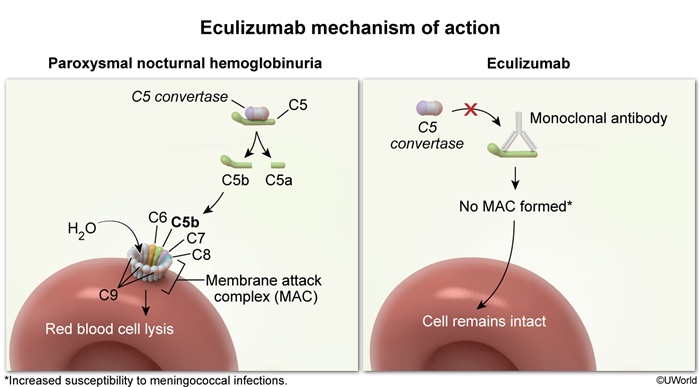Paroxysmal Nocturnal Hemoglobinuria
Article Sections
Introduction
Paroxysmal nocturnal hemoglobinuria (PNH) is a rare acquired disorder in which a hematopoietic stem cell loses the ability to produce glycosylphosphatidylinositol (GPI) anchors on its plasma membrane surface. Without these anchors, this cell and its progeny cannot hold certain proteins on the cell surface, becoming susceptible to complement-mediated hemolysis. In addition to hemolysis, patients with PNH may also have thrombosis and bone marrow failure.
Pathophysiology and risk factors
The GPI anchor is a glycolipid that normally secures various proteins to the plasma membrane surface. The phosphatidylinositol glycan anchor A (PIGA) gene is involved in the synthesis of GPI anchors. PNH develops when a multipotent hematopoietic stem cell acquires a mutation in PIGA. As a result, this stem cell and its progeny (eg, leukocytes, erythrocytes, platelets) lack dozens of
Continue Learning with UWorld
Get the full Paroxysmal Nocturnal Hemoglobinuria article plus rich visuals, real-world cases, and in-depth insights from medical experts, all available through the UWorld Medical Library.
Figures
